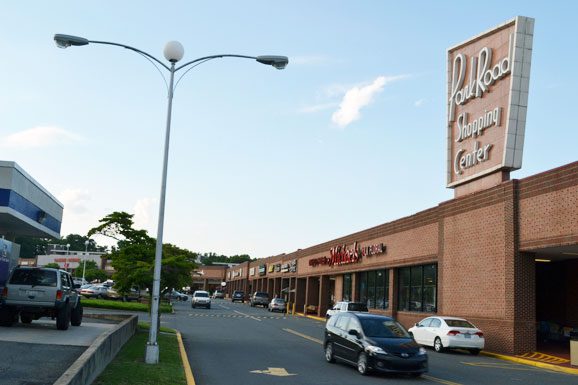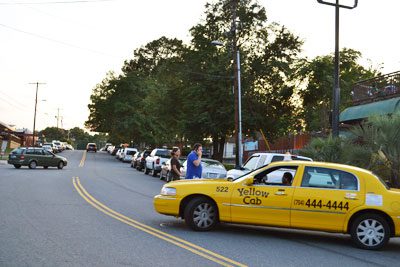How urban should Park-Woodlawn area become?

More than a half century after Park Road Shopping Center sprouted at what was then Charlotte’s southern edge, the Park Road-Woodlawn Road area has held up remarkably well.
Residents say they love living in the quiet, tree-lined neighborhoods of mostly single-family homes that surround a busy cluster of shops and restaurants near the intersection of the area’s namesake roads.
But now that the city has grown up around it, the area is changing. Traffic congestion is worsening, residents say, and developers have sought rezonings to build new projects along the area’s main thoroughfares.
|
Want to know more? To learn more about the Park Woodlawn Area Plan, Click here. |
Many say the future of the area – which is within a few miles of uptown, Interstate 77, the Lynx Blue Line, SouthPark Mall and Charlotte/Douglas International Airport – inevitably will be more urban than its past. But how urban should it be?
City planners and residents are grappling with that question as they craft a plan for the area. They’ve met seven times since the process began in November, most recently on last Tuesday, June 5. Based on residents’ input, planners have begun drafting a document that, if adopted by city officials, will help determine the area’s fate. Although Charlotte city plans, by themselves, don’t have any legal requirements or rezone property, they can offer a vision for future development, and they sometimes recommend zoning changes that sometimes take place after the plan is adopted.
Alberto Gonzalez, the planner overseeing the process, expects to seek comments from residents and the public on the plan in the early fall.
He said a primary challenge for Park-Woodlawn is how to make an area that’s largely auto-oriented and suburban in design better match its in-town surroundings.
 “It was built in a suburban pattern, but it’s really an urban neighborhood,” Gonzalez said. “How do you work that transition?”
“It was built in a suburban pattern, but it’s really an urban neighborhood,” Gonzalez said. “How do you work that transition?”
Gonzalez said planners will seek to preserve the area’s strong, middle-income neighborhoods while enhancing the accessibility and walkability of its commercial core, which has three primary components:
- Park Road Shopping Center, a strip of many independent, local businesses that has built an immensely loyal following since it opened in the 1950s at the northeast corner of Park and Woodlawn. (EDENS, a shopping center owner and operator that bought the Park Road center last year, has said it has no plans to significantly change the center, but a representative at Tuesday’s meeting said the company is making subtle changes to better define the center’s perimeter.)
- ParkTowne Village, a more recent but similarly vibrant collection of stores and restaurants built around a plaza of tables and fountains.
- Montford Drive, a row of bars and restaurants that has sprung up in recent years and can attract several thousand people on weekend nights.
Today, people often rely on their cars to travel between those destinations and sometimes even drive from shop to shop within the same complex. Those who dare to walk often must dangerously dash across traffic.
 Better connecting those places and making it more inviting to walk between them would encourage people to park their cars and maybe even hang out after running errands, Gonzalez said. Planners are also interested in better connecting the center to the Little Sugar Creek Greenway that runs behind it.
Better connecting those places and making it more inviting to walk between them would encourage people to park their cars and maybe even hang out after running errands, Gonzalez said. Planners are also interested in better connecting the center to the Little Sugar Creek Greenway that runs behind it.
Some nearby residents, like Brenda Campbell, applaud the idea of more dense, urban-style development in the area.
“We want it developed as an urban atmosphere” without “the big parking lots out front,” she said in an interview.
Others, like Helena Babington Guiles, are wary of inviting such development to an area where traffic is already problematic. Traffic counts show average weekday traffic volumes of about 30,000 vehicles on Park and Woodlawn.
She said traffic issues already are harming residents’ quality of life.
“It’s not just a business district,” she said during last week’s meeting. “Those are neighborhoods trying to live.”
Maddy Baer, who lives just south of the area, expects tension to continue between people eager to capitalize on Park-Woodlawn’s central location and those who want the area to remain true to its roots.
“You’re going to have a bit of a tug and a pull,” she said in an interview.